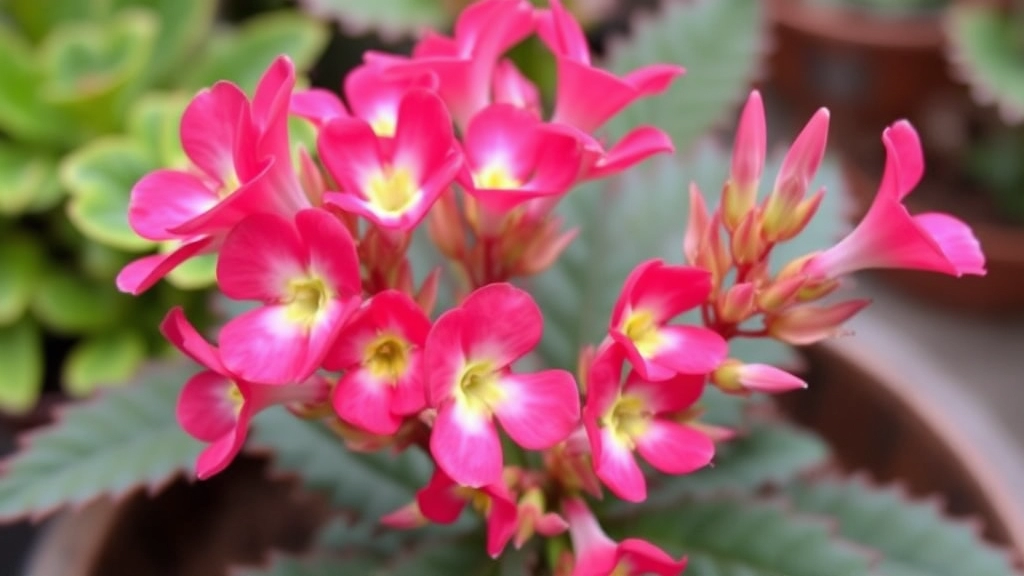Looking for Stunning Kalanchoe Pinnata Images?
You’re in the right place. Whether you’re a gardening enthusiast, a designer in need of stock photos, or someone curious about its medicinal properties, visual representations of this unique plant can be incredibly useful. In this article, we’ll dive into the characteristics of Kalanchoe Pinnata, its growth habits, and how to identify it through various stages of its life cycle.
From its vibrant leaves to its beautiful flowers, Kalanchoe Pinnata is a sight to behold. We’ll also cover essential care tips, propagation methods, and even some common issues you might encounter. Stick around to discover everything you need to know about this fascinating plant, all illustrated with high-quality images to guide you.
When considering a new addition to your plant collection, you might wonder what sets Kalanchoe Pinnata apart. This succulent is not only visually appealing but also offers unique characteristics that make it a favourite among plant enthusiasts.
Kalanchoe Pinnata leaves are thick, fleshy, and have a distinctive shape. Here are some key features:
– **Shape**: The leaves are oval to lanceolate, often with a wavy margin.
– **Colour**: They exhibit a rich green hue, sometimes with a hint of a reddish tint, particularly under direct sunlight.
– **Texture**: The surface is smooth and glossy, giving it a vibrant appearance.
– **Size**: Leaves can grow up to 30 cm in length, making them quite prominent.
These characteristics not only contribute to the plant’s aesthetic appeal but also enhance its ability to store water, a crucial feature for survival in arid conditions. For more detailed information, you can check out the [complete care guide for Kalanchoe Blossfeldiana succulent](https://planthq.org/complete-care-guide-for-kalanchoe-blossfeldiana-succulent/).
The flowers of Kalanchoe Pinnata are equally captivating. Here’s what you can expect:
– **Shape**: The flowers are tubular, often clustered in dense inflorescences.
– **Colour**: They typically bloom in shades of pink, red, or yellow, adding a splash of colour to your garden.
– **Blooming Period**: Flowering usually occurs in the warmer months, offering a delightful display during the growing season.
The striking flowers attract pollinators, making Kalanchoe Pinnata not just a decorative plant but also a contributor to local biodiversity. For additional insights on the health benefits of Kalanchoe Pinnata, feel free to explore [health benefits of Kalanchoe Pinnata extract](https://planthq.org/health-benefits-of-kalanchoe-pinnata-extract/).
Kalanchoe Pinnata Growth and Care Tips
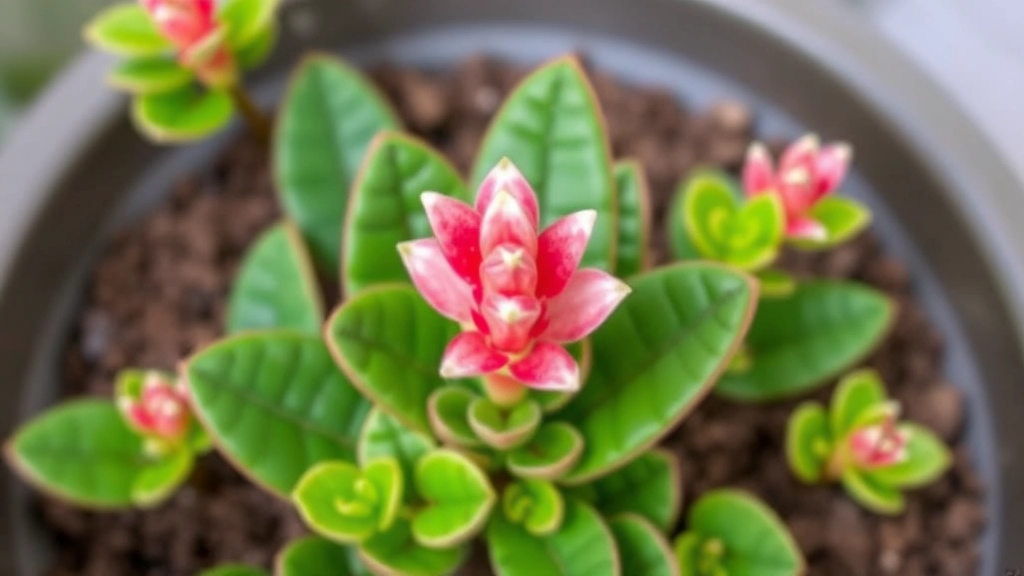
So, you’ve decided to bring a little Kalanchoe Pinnata magic into your life? Great choice! These beauties are not just stunning; they’re also pretty easy to care for. But, let’s be real, you probably have a few questions about keeping them thriving.
Light Requirements
Kalanchoe Pinnata loves the sunshine.
- Bright, indirect light is ideal.
- If you can, give them a spot near a window where they can soak up those rays without getting scorched.
Too little light? You’ll notice leggy growth and fewer blooms.
Watering Wisely
Watering can be a tricky game.
- Let the soil dry out between waterings.
- Overwatering is a common mistake that can lead to root rot.
A good rule of thumb? Stick your finger about an inch into the soil. If it feels dry, it’s time to water.
Soil and Potting
Choosing the right soil can make all the difference.
- Use a well-draining potting mix.
- Cactus or succulent mixes work wonders.
Make sure your pot has drainage holes to keep the roots happy.
Temperature and Humidity
Kalanchoe Pinnata is quite the tough cookie.
- They thrive in temperatures between 15°C to 25°C.
- Avoid frost, as they don’t handle it well.
As for humidity? They prefer a drier environment, so don’t worry about misting them.
Fertilising
Want to give your Kalanchoe a little extra love?
- Feed them with a balanced, diluted fertiliser every month during the growing season (spring and summer).
This will encourage lush growth and vibrant blooms.
Pruning and Maintenance
Keeping your plant tidy is super important.
- Remove any dead or yellowing leaves to encourage new growth.
- If it gets too leggy, don’t hesitate to prune it back a bit.
This will help maintain its shape and promote bushier growth.
Common Troubleshooting
If things aren’t going as planned, don’t stress!
- Yellow leaves? You might be overwatering.
- Leggy growth? It’s likely not getting enough light.
Just keep an eye on your plant and adjust accordingly.
Common Varieties of Kalanchoe Pinnata
As we explore the diverse world of Kalanchoe Pinnata, it’s essential to understand the various varieties that exist. Each variety brings its unique charm and characteristics, making them suitable for different gardening preferences and environments.
Popular Varieties
- Kalanchoe Pinnata ‘Mother of Thousands’
Known for its ability to produce numerous offsets or “pups” along the edges of its leaves. This variety is favoured for its striking foliage and ease of propagation. - Kalanchoe Pinnata ‘Chandelier Plant’
Features elongated leaves that grow in a unique, tiered arrangement. The visual appeal of this variety makes it a popular choice for indoor decor. - Kalanchoe Pinnata ‘Kalanchoe daigremontiana’
Often mistaken for the standard Kalanchoe Pinnata, this variety has distinctive leaf shapes and a more pronounced flowering pattern. It is celebrated for its resilience and adaptability. - Kalanchoe Pinnata ‘Variegata’
This variety showcases beautiful variegated leaves, adding a splash of colour to any garden. The unique appearance makes it a standout choice for collectors.
Growing Conditions
- Light Requirements: Most varieties thrive in bright, indirect sunlight.
- Soil Type: Well-draining soil is crucial to prevent root rot. For more details, you can refer to the best soil for Kalanchoe Blossfeldiana care tips.
- Watering Needs: Allow the soil to dry out between waterings to mimic their native habitat.
Understanding these common varieties can help you choose the right Kalanchoe Pinnata for your gardening needs. Each variety offers something special, whether it’s stunning foliage or ease of care. For additional insights, check out the health benefits of Kalanchoe Pinnata extract.
Propagation Methods of Kalanchoe Pinnata
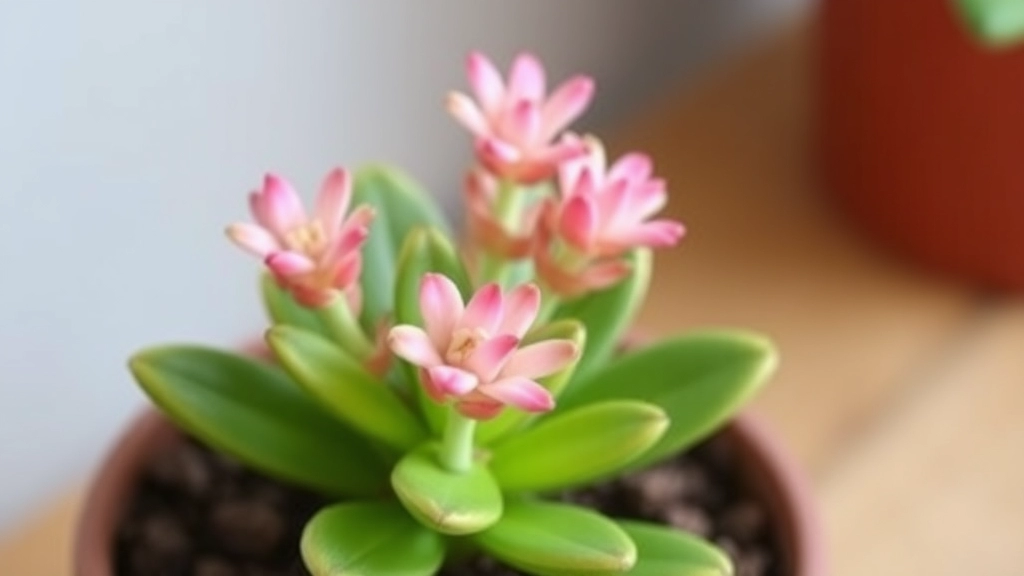
When considering how to expand your Kalanchoe Pinnata collection, understanding effective propagation methods is essential. This plant is not only easy to care for but also offers several straightforward ways to propagate, ensuring you can share its beauty with friends or enhance your garden.
1. Leaf Cuttings
One of the simplest methods involves using leaf cuttings. Here’s how to do it:
- Select a Healthy Leaf: Choose a mature leaf from a healthy Kalanchoe Pinnata plant.
- Cut the Leaf: Use a clean, sharp knife to cut the leaf into sections, ensuring each piece has a vein.
- Dry the Cuttings: Leave the cuttings in a dry place for a few days to allow the cut ends to callous over.
- Plant the Cuttings: Place the cuttings in well-draining soil, burying them slightly.
- Water Sparingly: Mist the soil lightly, keeping it moist but not soggy.
2. Offsets
Kalanchoe Pinnata naturally produces offsets, or “pups,” which can be easily separated and replanted.
- Identify Offsets: Look for small plants growing at the base of the main plant.
- Gently Remove: Carefully detach the offsets from the parent plant, ensuring some roots are included.
- Replant: Place the offsets in their own pots with well-draining soil.
3. Seeds
Though less common, propagating Kalanchoe Pinnata from seeds is another option.
- Collect Seeds: Harvest seeds from mature flowers once they have dried.
- Sow Seeds: Scatter the seeds on the surface of moist soil.
- Maintain Humidity: Cover with a plastic wrap to retain moisture until germination occurs.
4. Water Propagation
For those who prefer a more visual method, water propagation can be rewarding.
- Cut a Leaf: Similar to leaf cuttings, select a healthy leaf.
- Place in Water: Submerge the cut end in a glass of water.
- Change Water Regularly: Ensure the water stays fresh, and roots will begin to form in a few weeks.
By employing these propagation methods, you can easily grow new Kalanchoe Pinnata plants, enriching your collection or gifting them to others.
Medicinal Uses and Health Benefits of Kalanchoe Pinnata
As we delve deeper into the remarkable attributes of Kalanchoe Pinnata, it’s essential to highlight its medicinal uses and health benefits. This succulent is not just a beautiful addition to your garden but also a treasure trove of natural remedies.
Traditional Uses
Kalanchoe Pinnata has been used in traditional medicine across various cultures. Here are some key benefits:
- Anti-inflammatory Properties: The leaves are known for their ability to reduce inflammation. This makes them useful in treating conditions like arthritis and other inflammatory diseases.
- Wound Healing: The sap from Kalanchoe Pinnata is often applied to cuts and bruises, promoting faster healing and preventing infections.
- Respiratory Relief: Some cultures use the leaves to alleviate respiratory issues, such as coughs and asthma, by preparing herbal teas or infusions.
- Digestive Aid: It is also believed to support digestive health, helping to relieve stomach ailments.
Nutritional Value
Kalanchoe Pinnata is rich in several nutrients, which contribute to its health benefits:
- Vitamins: High in vitamins A, C, and E, it supports immune function and skin health.
- Minerals: Contains essential minerals like calcium and magnesium, vital for bone health.
Modern Research
Recent studies have begun to explore the phytochemical compounds in Kalanchoe Pinnata, revealing potential benefits such as:
- Antioxidant Effects: Protecting cells from damage caused by free radicals.
- Antimicrobial Activity: Showing promise in combating various pathogens.
Cautionary Note
While Kalanchoe Pinnata offers numerous health benefits, it’s crucial to approach its use with care. Always consult a healthcare professional before incorporating it into your health regimen, especially if you are pregnant, nursing, or on medication.
For more detailed information on the medicinal uses and applications of Kalanchoe Pinnata, and to understand its health benefits, visit our comprehensive guides.
Potential Risks and Toxicity in Kalanchoe Pinnata
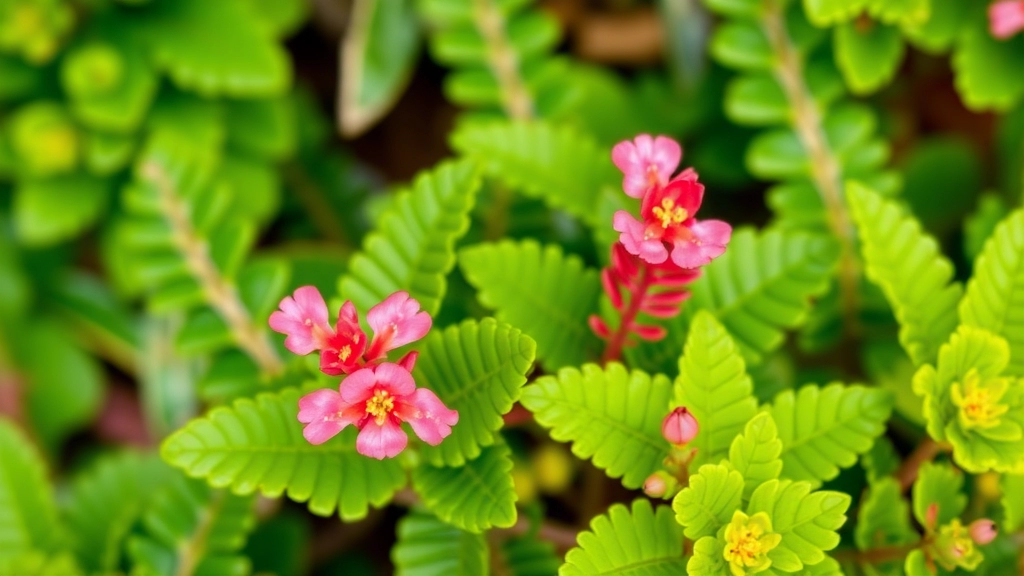
So, you’ve decided to dive into the world of Kalanchoe Pinnata. It’s a vibrant, resilient plant, but let’s chat about something that often gets overlooked: its potential risks and toxicity.
What You Need to Know
Kalanchoe Pinnata may look harmless, but it carries a few surprises under its leaves. Here are some points to ponder:
- Toxicity to Pets: If you have furry friends at home, be cautious. Kalanchoe can be toxic to pets, especially cats and dogs. Ingesting even a small amount might lead to symptoms like vomiting, diarrhea, or more severe reactions.
- Human Sensitivity: While not as dangerous to humans, some folks might experience skin irritation or allergic reactions. If you’re handling the plant, it’s wise to wash your hands afterward.
- Potential Interactions: If you’re on medication or have underlying health issues, consult with a healthcare professional before using Kalanchoe Pinnata for its medicinal properties. It can interact with certain medications, so it’s better to be safe than sorry.
- Overconsumption Risks: Using Kalanchoe Pinnata for its health benefits? Moderation is key. Overconsumption can lead to unwanted side effects, so always stick to recommended dosages.
Real Talk
I remember a friend who was super excited about their new Kalanchoe plant. They didn’t realise their curious cat had taken a nibble. A quick trip to the vet later, and they learned the hard way about the plant’s toxicity. It’s a good reminder to always research before bringing a new plant into your home.
Visual Guide: Kalanchoe Pinnata in Different Stages of Growth
When nurturing Kalanchoe Pinnata, visual cues can significantly enhance your understanding of its growth progression. Recognising these stages not only enriches your gardening experience but also helps you identify any potential issues early on.
Seedling Stage
Appearance: Tiny, delicate leaves emerge, often in clusters.
Care Tips:
- Ensure adequate light but avoid direct sunlight.
- Keep the soil moist but not waterlogged.
Juvenile Stage
Appearance: Leaves become larger and more robust, displaying a vibrant green hue.
Care Tips:
- Gradually introduce more sunlight.
- Fertilize lightly to encourage growth.
Mature Stage
Appearance: Thick, fleshy leaves with a distinct shape; plants can reach up to 1 meter in height.
Care Tips:
- Water less frequently; allow the soil to dry between watering.
- Prune as needed to maintain shape and encourage bushier growth.
Flowering Stage
Appearance: Clusters of tubular flowers in shades of red, orange, or yellow appear atop tall stems.
Care Tips:
Flowering Seasons and Bloom Patterns of Kalanchoe Pinnata
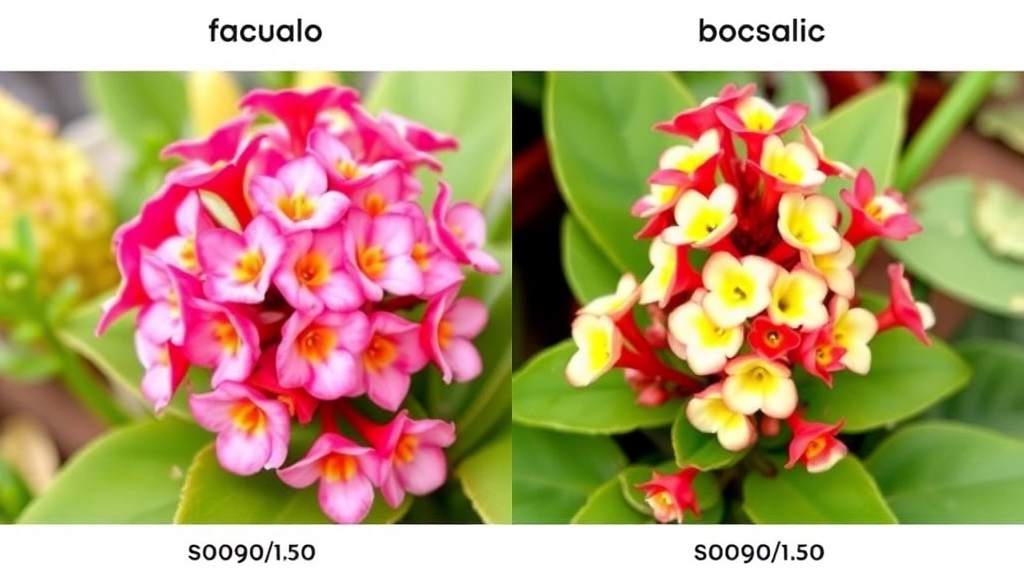
Have you ever wondered when your Kalanchoe Pinnata will burst into bloom? Understanding its flowering seasons and bloom patterns can really enhance your gardening experience.
Flowering Seasons
Kalanchoe Pinnata typically flowers during the warmer months. Here’s a quick breakdown:
- Spring to Summer: This is the prime blooming season.
- Late Summer to Early Fall: You might see some late blooms, especially if the conditions are just right.
Bloom Patterns
Now, let’s talk about what those blooms look like:
- Clusters of Flowers: The flowers grow in clusters, often creating a stunning display.
- Colourful Blooms: Expect shades of pink, red, yellow, or white. They really brighten up any space.
- Duration: Each bloom lasts several weeks, giving you plenty of time to enjoy the show.
Tips for Encouraging Blooms
If you want your Kalanchoe Pinnata to flower beautifully, keep these tips in mind:
- Sunlight: Place it in bright, indirect sunlight.
- Watering: Don’t overwater; allow the soil to dry out between watering.
- Fertilising: Use a balanced fertiliser during the growing season to promote blooming.
Kalanchoe Pinnata: Indoor vs Outdoor Growth
When considering whether to grow Kalanchoe Pinnata indoors or outdoors, many plant enthusiasts find themselves grappling with a few key questions.
Indoor Growth of Kalanchoe Pinnata
Kalanchoe Pinnata thrives indoors, provided you meet its specific needs. Here are some essential tips for indoor growth:
- Light Requirements: Place your plant in a bright, well-lit area. It thrives in indirect sunlight, but too much direct sun can scorch its leaves.
- Temperature: Ideal indoor temperatures range between 15°C to 25°C. Avoid exposing it to cold drafts or sudden temperature changes.
- Watering: Water sparingly. Allow the soil to dry out between waterings to prevent root rot.
- Soil Type: Use a well-draining potting mix, ideally one designed for succulents.
Outdoor Growth of Kalanchoe Pinnata
Growing Kalanchoe Pinnata outdoors can also yield impressive results, especially in suitable climates. Here’s what to consider:
Identifying Kalanchoe Pinnata from Similar Species
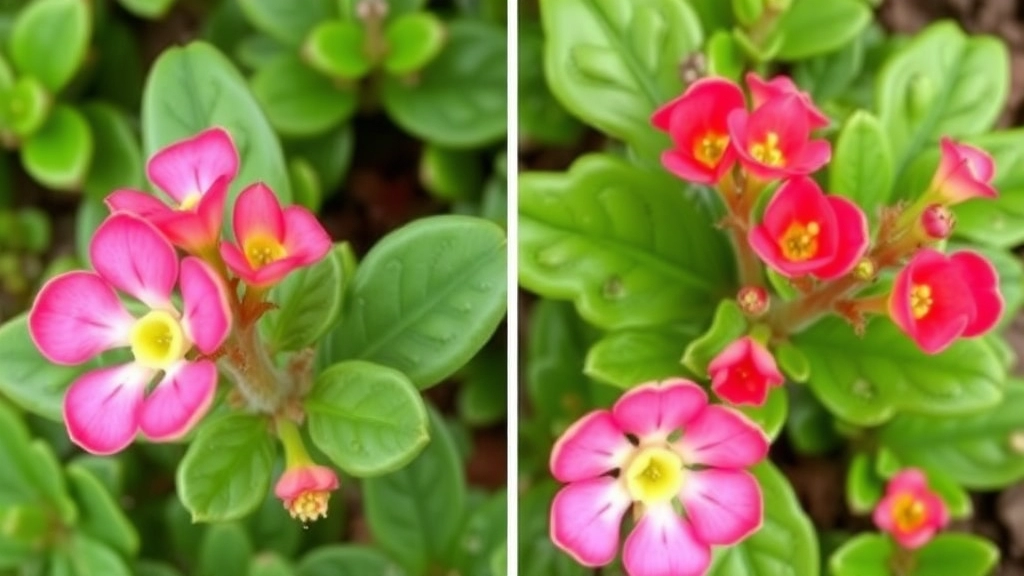
Have you ever found yourself staring at a plant, wondering if it’s Kalanchoe Pinnata or one of its lookalikes? You’re not alone! Many plant enthusiasts face this dilemma, and it can be tricky. Let’s break it down to make identification a breeze.
Key Features of Kalanchoe Pinnata
- Leaf Shape:
- Kalanchoe Pinnata boasts thick, fleshy leaves with a distinctive wavy edge.
- They are often oval or elliptical, with a smooth surface.
- Flower Appearance:
- The flowers are tubular and typically come in clusters.
- They can be pink, white, or yellow, adding vibrant colour to your garden.
- Growth Habit:
- This plant tends to grow upright, reaching heights of about 1-2 feet.
- It has a bushy appearance, making it stand out in a landscape.
Similar Species to Watch Out For
When identifying Kalanchoe Pinnata, keep an eye out for these similar species:
- Kalanchoe Daigremontiana:
- Also known as Mother of Thousands, it has a more jagged leaf edge and produces tiny plantlets along the leaf margins.
- Kalanchoe Blossfeldiana:
- This one features smaller leaves and a more compact growth habit. Its flowers are usually more densely clustered.
- Kalanchoe Tomentosa:
- Known as Panda Plant, it has fuzzy leaves with a silvery appearance and a more rounded shape.
Quick Tips for Distinguishing Kalanchoe Pinnata
- Smell: Kalanchoe Pinnata often has a distinct scent when the leaves are crushed, unlike some similar species.
- Growth Environment: This plant thrives in well-draining soil and bright light, while others may prefer different conditions.
As we delve deeper into the care of Kalanchoe Pinnata, it’s essential to address the common challenges that can arise in its growth journey. Understanding these issues can help you keep your plant healthy and thriving.
### Pests to Watch Out For
Kalanchoe Pinnata can attract a few pesky pests. Here’s what to look for:
– **Aphids**: Tiny, green insects that suck sap from the leaves, leading to wilting.
– **Mealybugs**: White, cotton-like masses that can be found in leaf axils and on stems.
– **Spider Mites**: Small, red or yellow mites that create fine webbing on the plant.
### Signs of Infestation
How can you tell if your Kalanchoe is under attack? Keep an eye out for:
– Yellowing leaves
– Stunted growth
– Sticky residue on leaves (honeydew from aphids)
– Visible pests on the plant
### Disease Concerns
In addition to pests, Kalanchoe Pinnata can be susceptible to certain diseases:
– **Root Rot**: Often caused by overwatering, leading to mushy roots.
– **Powdery Mildew**: A fungal infection that appears as white powder on leaves, thriving in humid conditions.
### Prevention and Treatment
To keep your Kalanchoe Pinnata in top shape, consider these strategies:
– **Regular Inspection**: Check your plant weekly for any signs of pests or disease.
– **Proper Watering**: Ensure the soil drains well; let it dry out between waterings.
– **Neem Oil**: A natural pesticide that can help control pests without harming the plant.
– **Fungicides**: If you notice powdery mildew, applying a fungicide can effectively treat the issue.
For more detailed care tips, you might find our [how to grow and care for Kalanchoe Pinnata](https://planthq.org/how-to-grow-and-care-for-kalanchoe-pinnata-tips-and-benefits/) guide helpful. Additionally, understanding the [health benefits and usage of Kalanchoe Pinnata tea](https://planthq.org/health-benefits-and-usage-of-kalanchoe-pinnata-tea/) can provide more insights into the versatility of this plant.
Popular Uses of Kalanchoe Pinnata in Landscaping and Decoration
So, you’ve got Kalanchoe Pinnata, and you’re wondering how to make the most of it in your space?
This versatile plant is not just a pretty face; it’s a fantastic addition to both gardens and indoor settings.
Here are some popular uses:
- Border Planting: Kalanchoe Pinnata works wonders as a border plant. Its lush green leaves create a vibrant backdrop for other flowers.
- Rock Gardens: Its drought-resistant nature makes it perfect for rock gardens. Pair it with stones for a natural look.
- Container Gardening: Whether on a patio or balcony, Kalanchoe Pinnata shines in pots. You can mix it with other succulents for a stunning display.
- Indoor Decor: The plant’s unique leaves and flowers can liven up your living room. Place it on a windowsill where it can soak up sunlight.
- Medicinal Garden: If you’re into herbal remedies, consider adding it to a medicinal garden. Its health benefits are well-documented.
- Vertical Gardens: Use Kalanchoe Pinnata in vertical garden setups. Its cascading growth looks fantastic and saves space.
- Focal Point: With its distinctive flowers, it can serve as a focal point in any garden layout.
I remember visiting a friend’s garden where she had Kalanchoe Pinnata as a border around her vegetable patch. It not only looked great but also thrived with minimal care.
For more detailed information on how to grow and care for this plant, check out our comprehensive guide.
FAQs about Kalanchoe Pinnata
What are the light requirements for Kalanchoe Pinnata?
Kalanchoe Pinnata thrives in bright, indirect light. Placing it near a window where it can receive ample sunlight without direct exposure is ideal. Insufficient light can lead to leggy growth and fewer blooms.
How often should I water Kalanchoe Pinnata?
Allow the soil to dry out between waterings. Overwatering is a common mistake that can lead to root rot. A good rule of thumb is to stick your finger about an inch into the soil; if it feels dry, it’s time to water.
What type of soil is best for Kalanchoe Pinnata?
Use a well-draining potting mix. Cactus or succulent mixes are highly recommended. Ensure your pot has drainage holes to keep the roots healthy.
What temperature and humidity levels are ideal for Kalanchoe Pinnata?
Kalanchoe Pinnata thrives in temperatures between 15°C to 25°C. It prefers a drier environment and does not require misting. Avoid frost, as it can be detrimental to the plant.
How should I fertilise Kalanchoe Pinnata?
Feed your Kalanchoe with a balanced, diluted fertiliser every month during the growing season (spring and summer) to encourage lush growth and vibrant blooms.
What are the common propagation methods for Kalanchoe Pinnata?
Common propagation methods include leaf cuttings, offsets, seeds, and water propagation. Each method involves specific steps to ensure successful growth.
Is Kalanchoe Pinnata toxic to pets?
Yes, Kalanchoe Pinnata can be toxic to pets, especially cats and dogs. Ingesting even a small amount may lead to symptoms like vomiting, diarrhea, or more severe reactions.
When does Kalanchoe Pinnata typically flower?
Kalanchoe Pinnata typically flowers during the warmer months, from spring to summer. You might also see some late blooms in late summer to early fall if conditions are favorable.
How can I identify Kalanchoe Pinnata from similar species?
Kalanchoe Pinnata has thick, fleshy leaves with a distinctive wavy edge and tubular flowers that grow in clusters. It tends to grow upright, reaching heights of about 1-2 feet with a bushy appearance. Be cautious of similar species like Kalanchoe Daigremontiana, Kalanchoe Blossfeldiana, and Kalanchoe Tomentosa, which have different leaf shapes and growth habits.
What are the potential risks of Kalanchoe Pinnata to humans?
While not as dangerous to humans as to pets, some people might experience skin irritation or allergic reactions. It’s advisable to wash your hands after handling the plant. Additionally, if using Kalanchoe Pinnata for medicinal purposes, consult a healthcare professional to avoid potential interactions with medications.
References
-
How to Grow Kalanchoe Indoors
-
Kalanchoe Plant Care â How To Grow A Kalanchoe
-
Kalanchoe Plant Care Guide
